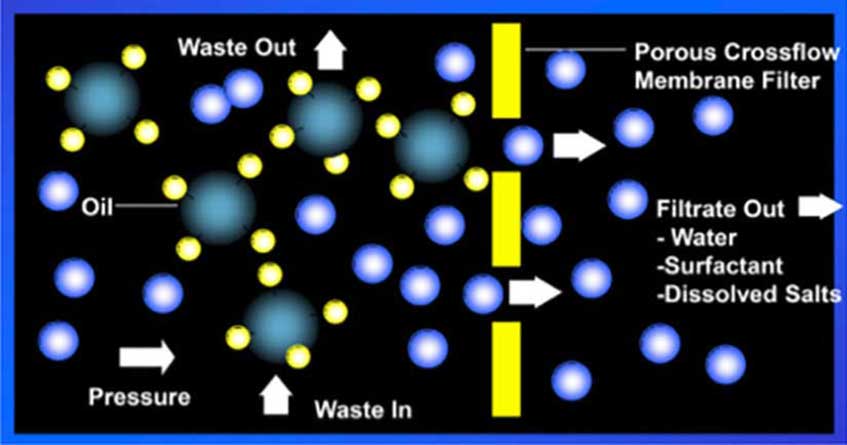Fabrication manufacturer has an issue with discharging tumbling water from two vibratory deburring systems.
Medical, Electronic and Bank Security

Hartzell Manufacturing, an aluminum and zinc die caster, was having problems with the St. Paul, MN Metropolitan Waste Control Commission regarding the discharge of tumbling water from their two vibratory deburring systems.
They were discharging anywhere from 1,000 GPD to 1,800 GPD. The tumbling water consisted of 1 oz. of alkaline detergent for every gallon of water. After the tumbling operation it was discharged into a pit located below the ground, where it was pumped to the sewer for discharge. This water was contaminated with large amounts of solids (sub-micron to visible particles not easily settleable) from the ceramic media, and metal fines and chips from the castings.
Due to the nature of operation there was a high content of soluble metals, primarily copper, lead and zinc. Hartzell investigated many available technologies, which included centrifuges, hydrocyclones, cartridge filters, bag filters, evaporators, microfiltration, chemical treatment and gravity settling. They tested all these methods and had no success.
The cartridge and bag filters even failed within minutes. They did not want to use chemical treatment due to high labor and chemical costs. Evaporators were being considered but other local die casters were having maintenance and output difficulties.
Another alternative was to eliminate this operation and send parts out to a sister plant out of state or to a tumbling house. They didn’t want to do this due to loss of control and flexibility.
PRAB’s approach and philosophy is to keep it simple, automate – require as little manpower as possible, and to recycle whenever possible. By clarifying and reusing the alkaline solution as long as possible, our customers can save in make up fluids as well as keep waste to a minimum. By using and combining methods already tried as pretreatment, we could add the missing link — ULTRAFILTRATION. Hartzell closed off the sewer and the Tumbling Water Recycling System became the “heart” of the closed loop that the fluid passed through. (See flow diagram above.) The Results: Hartzell has had the Tumbling Water Recycling System in operation for about a year with great success.
Hartzell has saved over 375,000 gallons of water and sewer costs, a 99% reduction, and over 350 gallons of chemical/soap purchases, a 90% savings. With only 1-2 man hours per week needed to operate, the only waste generated have been approximately 1 drum of solid sludge and 1 drum of liquid concentrate.
They have also been in compliance during this entire period should they have to discharge any clean permeate solution. The total operating cost of this system is between .6 to 1.3 cents per gallon, which includes labor, electrical, UF cleaning solution, bag filters and UF membranes. In comparison, the cost of operation for quoted chemical treatment systems were 5 – 7 cents per gallon for the chemical alone. This doesn’t even include labor or electrical costs. They wouldn’t have benefited from the savings in water/sewer and soap purchases and at the same time generated much more solid and sludge waste from the process.